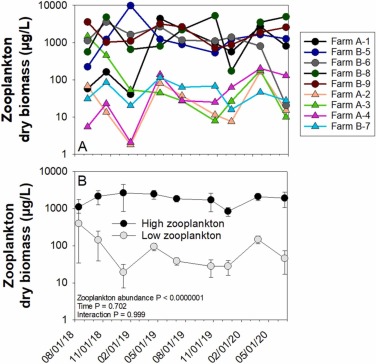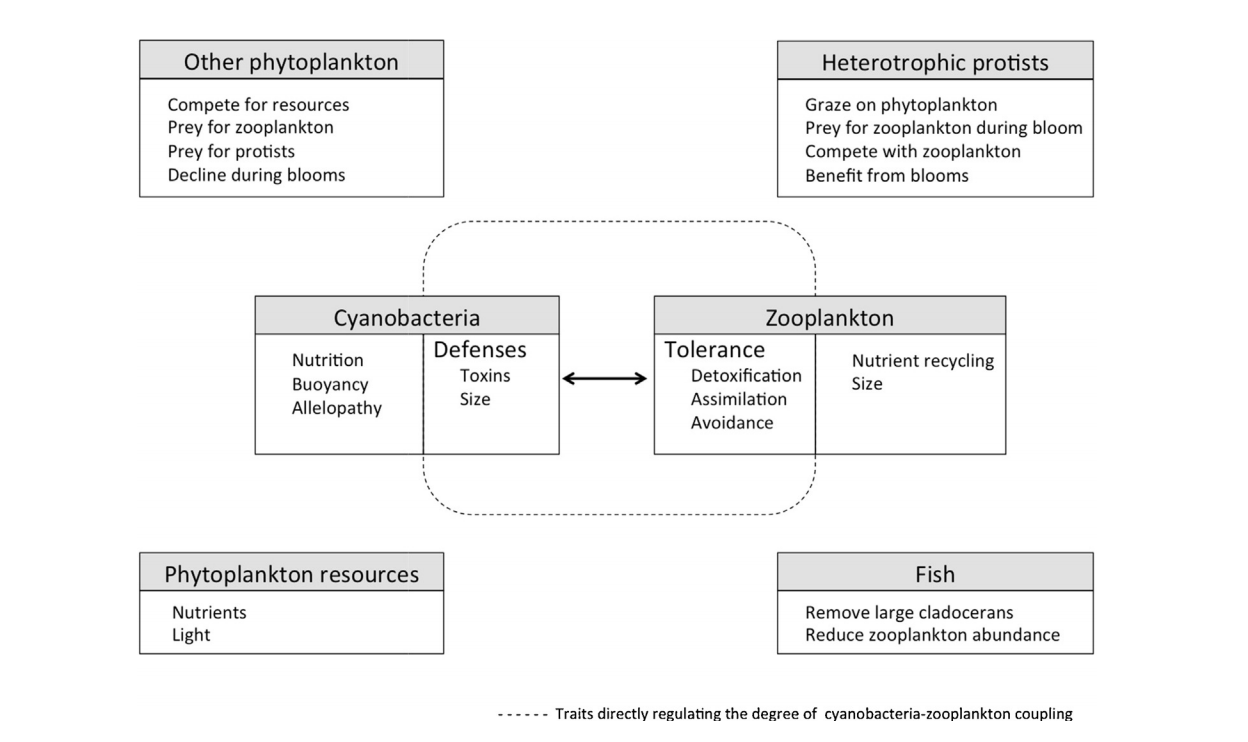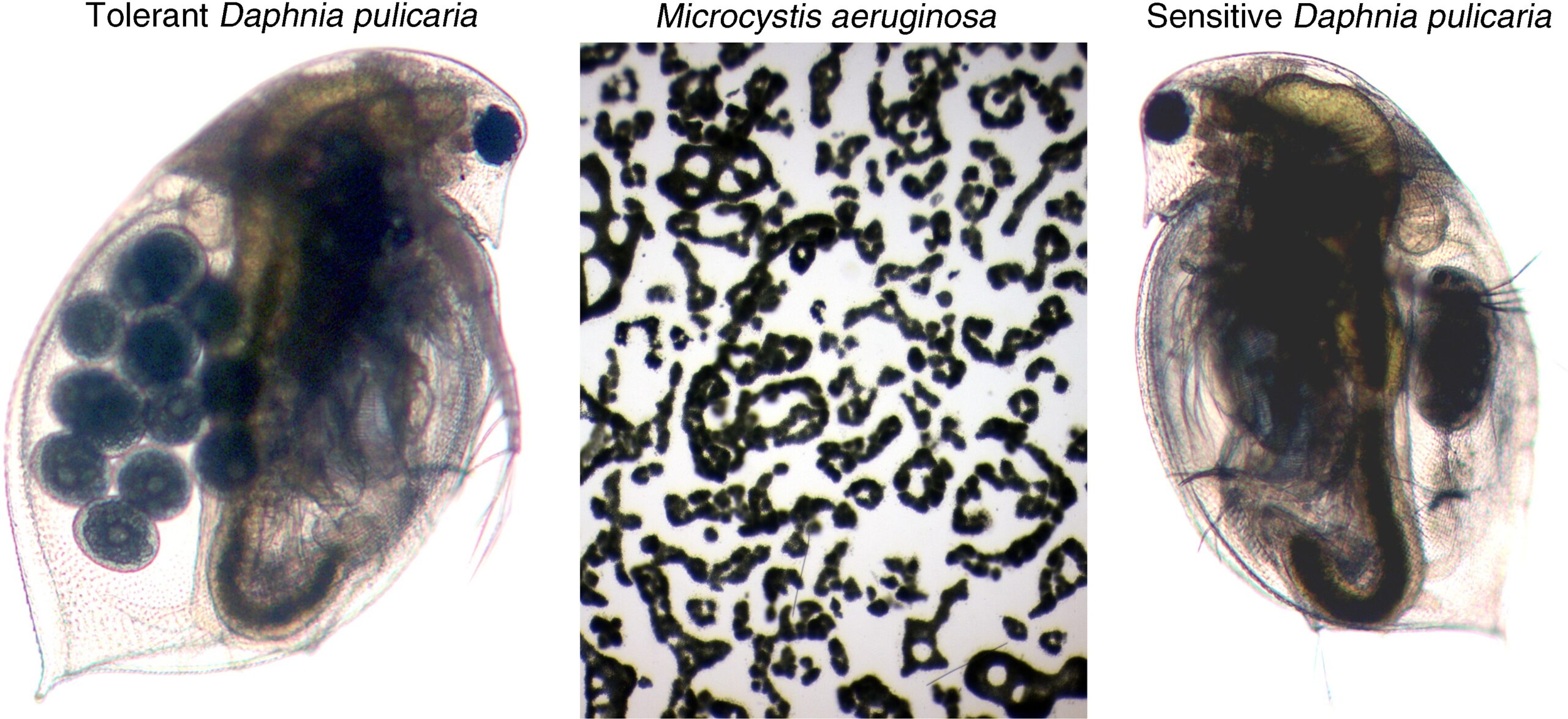Keyword: Daphnia

Belfiore, A., R. P. Buley, E. G. Fernandez-Figueroa, M. Gladfelter, and A. E. Wilson. 2021. Zooplankton as an alternative method for controlling phytoplankton in catfish pond aquaculture. Aquaculture Reports 21:100897.
Abstract
In pond aquaculture, production of toxins and off-flavor compounds by cyanobacteria can negatively affect fish health and production. Studies have explored chemical or physical methods for controlling algal blooms in aquaculture ponds, which although effective, may be short-lived and can negatively impact non-target organisms, including aquaculture species. Food web manipulations have a long history in lake and fisheries management to improve water quality, but have been rarely considered in aquaculture. This study examined zooplankton and phytoplankton communities, cyanobacterial toxins, and nutrients in nine catfish aquaculture farm-ponds in west Alabama, USA. The goal of this project was to track phytoplankton and zooplankton abundances with respect to each other, with and without efforts to reduce zooplanktivorous fish in some of the ponds. During this project, farm managers reduced zooplanktivorous fish abundance in select ponds to create a large-scale field experiment that addressed the role of zooplankton control of phytoplankton in hypereutrophic catfish aquaculture ponds when zooplanktivorous fish were or were not excluded. There was a strong negative effect of zooplankton on phytoplankton, including cyanobacteria, despite high nutrient concentrations. Although high zooplankton ponds sustained elevated zooplankton biomass during much of this study, including when pond temperatures exceeded 30 °C, the effect of zooplankton on phytoplankton was most pronounced during the non-growing season (November–April). In addition, total ammonia nitrogen was significantly higher in high zooplankton ponds, which could lead to ammonia toxicity in fish at elevated temperature and pH. Our findings suggest that zooplankton biomanipulation may be an efficient method to control algal blooms in farm-pond catfish aquaculture.

Ger, K. A., P. Urrutia-Cordero, P. C. Frost, L.-A. Hansson, O. Sarnelle, A. E. Wilson, and M. Lurling. 2016. The interaction between cyanobacteria and zooplankton in a more eutrophic world. Harmful Algae 54:128-144. (Clarivate Analytics Web of Science Highly Cited Paper)
Abstract
As blooms of cyanobacteria expand and intensify in freshwater systems globally, there is increasing interest in their ecological effects. In addition to being public health hazards, cyanobacteria have long been considered a poor quality food for key zooplankton grazers that link phytoplankton to higher trophic levels. While past laboratory studies have found negative effects of nutritional constraints and defensive traits (i.e., toxicity and colonial or filamentous morphology) on the fitness of large generalist grazers (i.e., Daphnia), cyanobacterial blooms often co-exist with high biomass of small-bodied zooplankton in nature. Indeed, recent studies highlight the remarkable diversity and flexibility in zooplankton responses to cyanobacterial prey. Reviewed here are results from a wide range of laboratory and field experiments examining the interaction of cyanobacteria and a diverse zooplankton taxa including cladocerans, copepods, and heterotrophic protists from temperate to tropical freshwater systems. This synthesis shows that longer exposure to cyanobacteria can shift zooplankton communities toward better-adapted species, select for more tolerant genotypes within a species, and induce traits within the lifetime of individual zooplankton. In turn, the function of bloom-dominated plankton ecosystems, the coupling between primary producers and grazers, the stability of blooms, and the potential to use top down biomanipulation for controlling cyanobacteria depend largely on the species, abundance, and traits of interacting cyanobacteria and zooplankton. Understanding the drivers and consequences of zooplankton traits, such as physiological detoxification and selective vs. generalist grazing behavior, are therefore of major importance for future studies. Ultimately, co-evolutionary dynamics between cyanobacteria and their grazers may emerge as a critical regulator of blooms.

Chislock, M. F., O. Sarnelle, B. K. Olsen, E. Doster, and A. E. Wilson. 2013. Large effects of consumer offense on ecosystem structure and function. Ecology 94(11):2375-2380.
Abstract
Study of the role of within-species adaptation in ecological dynamics has focused largely on prey adaptations that reduce consumption risk (prey defense). Few, if any, studies have examined how consumer adaptations to overcome prey defenses (consumer offense) affect ecosystem structure and function. We manipulated two sets of genotypes of a planktonic herbivore (Daphnia pulicaria) in a highly productive ecosystem with abundant toxic prey (cyanobacteria). The two sets of consumer genotypes varied widely in their tolerance of toxic cyanobacteria in the diet (i.e., sensitive vs. tolerant). We found a large effect of tolerant D. pulicaria on phytoplankton biomass and gross primary productivity but no effect of sensitive genotypes, this result stemming from genotype-specific differences in population growth in the presence of toxic prey. The former effect was as large as effects seen in previous Daphnia manipulations at similar productivity levels. Thus, we demonstrated that the effect of consumer genotypes with contrasting offensive adaptations was as large as the effect of consumer presence/absence.
Sarnelle, O. and A. E. Wilson. 2008. Type III functional response in Daphnia. Ecology 89(6):1723-1732.
Abstract
The functional response of Daphnia, a common pelagic herbivore in lakes, was assessed with a combination of secondary and meta-analyses of published data and new data from an experiment conducted using very low food levels. Secondary analyses of literature data (28 studies, n = 239-393) revealed a significant positive influence of food concentration on Daphnia clearance rate at low food levels, i.e., evidence of an overall Type III functional response. This result was not an artifact of including data from Daphnia that were exhausted from prolonged food deprivation (more than three hours at very low food). Meta-analysis of Daphnia clearance rate vs. food concentration across a range of low food concentrations (eight studies) showed a significantly positive slope across studies, which also supports the presence of a Type III response. Congruent with these analyses of published data, the feeding experiment showed clear evidence of a Type III functional response for D. pulicaria feeding on Ankistrodesmus falcatus. Food levels at which Daphnia clearance rate declined with decreasing food were near the minimum resource requirement for Daphnia population maintenance at steady state (R*). We suggest that Type III responses are more common than previously believed, perhaps because of the relative paucity of observations at low food levels, and that reduced prey mortality at low phytoplankton densities could be a stabilizing mechanism for Daphnia-phytoplankton systems under resource scarcity.